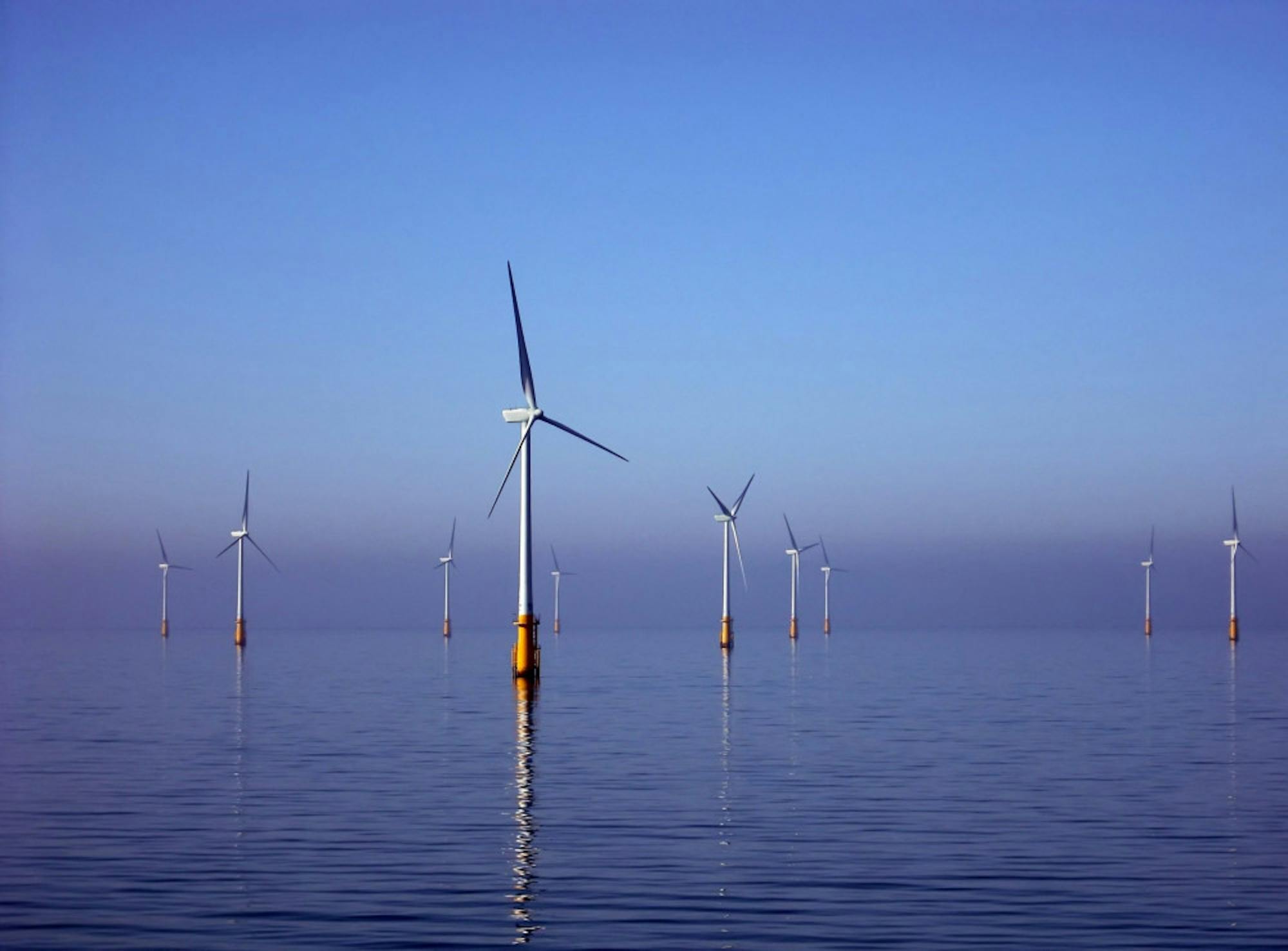A group of Tufts faculty members and outside researchers were recently awarded a grant from the National Science Foundation to pursue their project entitled “Multi-Domain, Multi-Scale, Policy-Aware Digital Twin for Offshore Wind Energy Infrastructure.” Work on this project is expected to officially begin in January 2023.
The Principal Investigator for this project is Babak Moaveni, a professor in the Department of Civil and Environmental Engineering. Moaveni will be assisted by two co-PIs from Tufts: Anna Haensch, a senior data scientist at Tufts’ Data Intensive Studies Center, and Usman Khan, an associate professor in the Departments of Electrical and Computer Engineering and the Department of Computer Science. The third co-PI is Hamed Ebrahimian, an associate professor in Civil and Environmental Engineering at the University of Nevada, Reno.
Haensch explained the research that the team will be undertaking in the upcoming months.
“We are taking a broad approach to studying the structural health and maintenance of offshore wind farms,” Haensch wrote in an email to the Daily. “We propose a method for constructing ‘digital twins’ of wind turbines so that we can track the health of these huge structures as they withstand high intensity wind and wave events, as well as the corrosion, stress, and fatigue that occurs over a lifetime.”
Moaveni explained the concept of digital twins.
“That process of integration — the model with data — we call it digital twinning,” he told the Daily. “So the model represents a system but it’s not a live model unless you have data. [For example], if you put sensors on your wind turbine and you collect the sensors’ data and combine it with a model, that becomes a live model or a ‘digital twin.’”
This project advances the Biden administration’s commitment to improving renewable energy sources in the United States. Eric Hines, a professor of civil and environmental engineering who directs Tufts’ offshore wind graduate program and is one of this project’s senior personnel, described how it could contribute to the development of clean energy.
“We are developing an approach to develop full digital twins for the U.S. offshore wind fleet, which the Biden-Harris Administration aims to grow to 30 GW by 2030. That is approximately 2000 offshore wind turbines that are the size of Boston’s Hancock Tower,” Hines wrote in an email to the Daily. “These turbines will form the basis of our renewable energy infrastructure on the East Coast, and we need to have high quality systems in place from day one to monitor their vital signs.”
Other collaborators on the project include six Tufts faculty members from departments including mechanical engineering, mathematics and public health. Moaveni explained how working with people from fields outside of engineering helps separate this project from past projects about wind turbines.
“Now, we have a couple of projects on just digital twinning of wind turbines, but for wind turbines, the decision making is also very sensitive to policy, safety and other things that we as engineers are not always involved with. … So what we proposed here is, can we include all of this in our optimal decision making?” Moaveni said.
The team will also include international collaborators from countries like Norway, Denmark and the United Kingdom. Moaveni explained why the help of international collaborators is particularly helpful for the study of offshore wind energy.
“We do have a very strong collaboration with an international team. … These [international] institutes are more advanced, the offshore wind [business] is more advanced in Europe because there are many offshore wind farms in the North Sea,” Moaveni said. “But the U.S. is just starting to build their fleet of offshore wind turbines.”
Despite a team of qualified members, Haensch expects the project to come with its share of difficulties, as the subject matter is complicated.
“This is an incredibly interdisciplinary project with lots of interconnected components,” she wrote. “The turbine system itself is a complex mechanical object, and the way multiple turbines interact on a windfarm increases this complexity. … Once we add in the human factors and policy, we have a truly multidisciplinary problem.”
Despite these expected challenges, Hines shared his excitement about working with such a diverse group of collaborators.
“Tufts is a rare environment where you can bring together engineers, data scientists, humanists, mathematicians, and policy experts to collaborate on such a project,” Hines wrote. “We are deeply grateful for the opportunity to work with high quality colleagues from all these backgrounds on a common goal!”






